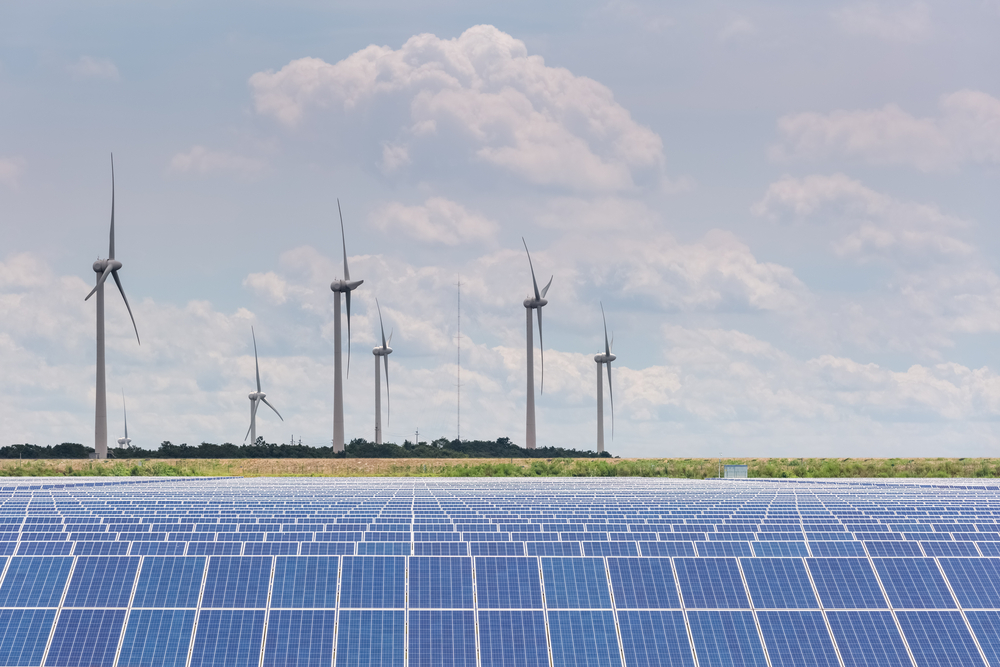
How Tech Went Big On Green Energy
There’s no way around it - tech companies need enormous amounts of power to operate. Their data centers are incredibly energy intensive, and the ever increasing array of services they offer means the power needs of the big tech firms continues to increase every year.
To give you an idea of just how rapidly the major tech company’s energy requirements are increasing, in just the five year period from 2013 to 2018, Google’s annual electricity consumption tripled. And between 2015 and 2019, Facebook’s electricity use quadrupled.
But big tech is now starting to go green in a big way. The big tech leaders including Google, Facebook, Amazon, and Microsoft are now the world’s largest corporate buyers of clean energy. So, what is driving this change and how are they going about their green transition?
Why Tech Companies Are Going Green
The main reason the major tech companies’ electricity consumption is increasing so rapidly is that the number of customers they serve and the number of services they offer continues to rise. Larger and faster data centers must be built to service the transition to cloud computing as well as to power the new products and services released each year.
Higher video quality and the uptake of streaming services mean that data demands are increasing exponentially. The rise of ecommerce, accelerated even faster by the COVID pandemic, means more online orders, larger fulfilment centers, and more delivery trucks distributing the goods.
New AI and machine learning technologies are incredibly power hungry, something many people overlook in the transition to automation. For example, training just a single neural network model can result in the emission of as much carbon as five cars would produce over their whole lifetime. As AI models become more accurate and more complex, the computational power required to achieve these goals increases not linearly, but exponentially. In the search for more accurate models and insights, computational power demands skyrocket in the quest to make a model just a fraction of a percent more accurate than the far less energy intensive previous iteration.
What The Major Players Are Doing About It
In 2017, Amazon commissioned its first wind farm in Texas. It was a 250MW farm and represented Amazon’s commitment to significantly ramp up its green credentials by directly investing in renewable sources of power. It was the beginning of a rapid shift that now sees Amazon as the largest corporate purchaser of green energy in the US.
The reason this kind of direct action is occurring is that the information and communications tech sector as a whole is now a major contributor of global greenhouse emissions. And its share of total carbon emissions continues to rise. By 2040, the ICT sector is forecast to account for 14 percent of the world’s total carbon emissions. This is an astonishing rise from just 1.5 percent in 2007.
Google has set a target of running all of its data centres on 100 percent renewable electricity by 2030. Microsoft has gone one step further and pledged to not just become carbon neutral, but to actually go “carbon negative” by 2030. This means it plans on pulling more carbon dioxide out of the atmosphere than it emits.
Such a target will need to be achieved by programs such as reforestation projects or from direct carbon capture from the atmosphere using new technologies. Unlike many countries, which have still not taken this step, Microsoft has also employed an internal price on carbon, to incentivize departments and teams to reduce their carbon footprint.
It is this type of rivalry between the tech giants that will help countries reach their climate goals far sooner than they otherwise would have. Ambitious targets and attempts to “one-up” the green credentials of rival firms is a major driver of positive change in firms becoming more environmentally friendly.
How Can You Be Greener With Your Technology?
Writing software doesn’t seem like an area with much scope for going greener. But by implementing a strategy with some set boundaries that targets the software development life cycle, you can make a real difference.
Start by reviewing and refining the software development life cycle by asking - what’s the smallest possible environmental footprint needed to make the application? For software updates, have an understanding of how much more energy a new version will consume compared to the previous version.
What is the trade-off for new functionalities? Remember that as the accuracy of AI models increases, the resource intensity required to make incremental improvements increases too, while the rate of improvement decreases. So, it might require doubling the computational intensity of an AI model to get its accuracy from 99.5 to 99.6 percent. Is this a worthwhile goal and use of resources?
You should also be making constant assessments of alternatives that can be more efficient. In both the human and power resources required to develop solutions, as well as their ongoing energy requirements to operate. These assessments should test the software’s compatibility across various energy-constrained designs, such as in mobile devices.
There are also often other benefits from creating more efficient, low power software, such as in extending the battery life of devices, which is of high importance in consumer smartphone use.
There are now some great tools available to help develop more efficient systems. For example, Intel offers developers various tools and resources to help manage energy consumption. The company’s Software Development Assistant helps engineers to make energy measurements of systems in development as they execute specific workloads within apps to determine efficiency levels.
To find out more about how you can take advantage of new strategies and tools to make your tech greener and more efficient, talk to FinXL.
